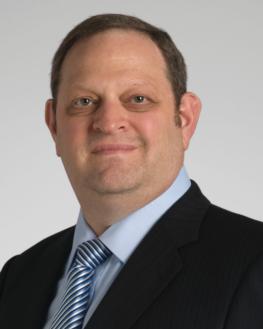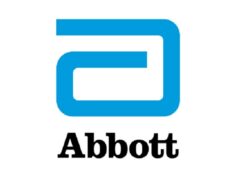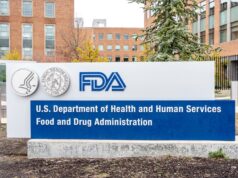
By Bruce L Wilkoff
Heart Rhythm 2011 was yet another exciting and innovative time for our attendees. We congratulate Dr Anne Gillis for beginning the meeting with a thought-provoking and relevant Opening Plenary Session, which featured keynote speaker Clayton M Christensen. Christensen’s theories on disruptive innovation represent a well-known cornerstone in the field of heart rhythm disorders. For decades, we have advanced the field and brought new technologies and therapies to the forefront that have changed patient care in vast measure. While we have made great strides in recent years, Christensen’s speech reiterates that more work is to be done.
We must continue science, discovery and innovation and look for new ways and new ideas that are disruptive to the healthcare community. These last few days [during Heart Rhythm 2011] have been filled with innovative science, new additions such as the Networked EP Lab and popular elements including live cases, Ideas on Trial and Rhythm Theatres. While in San Francisco, we have mapped out a great blueprint for the next 12 months, which will move us forward as leaders in quality, advocacy, research and technology.
The next year promises to challenge us all, but also provide us with unique opportunities to lead efforts for better quality and outcome standards. The society is nearly upon its third year of our Strategic Plan and we have many initiatives to bring us closer to our envisioned future for patients living with heart rhythm disorders.
One focus of the society’s Strategic Plan is advocacy. It is our mission to advocate for our members and patients by collaborating with government agencies, so effective legislation is written that improves access to care, increases quality and measurement in care delivery and increases opportunities for research. In the next year, the society will quicken its step in the engagement and collaboration with government and public agencies including the US Food and Drug Administration, Center for Medicare and Medicaid Services, National Institutes of Health and the American Medical Association. While the dialogue is not always easy, we do have a seat at the table and are part of the conversation. It is critical to the future of our field and for the care of our patients that we participate in these discussions.
Stemming from our increased focus on advocacy, we will also increase the engagement and collaboration with the larger heart rhythm community and societies with synergistic priorities. More can be done with our partnering societies in regions across the globe and within the United States. Where relationships are already formed we will make them stronger and in other areas we will forge new relationships and collaborate in ways that meet the needs of our colleagues and patients in all regions and countries. We recognise there are unique challenges depending on your location, so we have formed an International Task Force to examine these intricate challenges and identify areas where the Society can fulfill a void or collaborate to build the programs and services that overcome these challenges for our constituents. As we have seen in San Francisco, technology is at the centre of our environment.
The Networked EP Lab unveiled this year is tangible evidence of how we can integrate healthcare enterprises, device clinics, the EMR and build interoperability in our labs and work processes. Health information technology and meaningful use may seem like new buzz words, but they are critically important and each of us must engage and learn. The Heart Rhythm Society is committed to being a resource and will help you navigate these new trends, requirements and opportunities. If you do not know what meaningful use is, we will teach you. To lead this effort, the Society has formed a Health Information Technology task force, which I am a part of. It is innovation in technology that has gotten us where we are today and will lead us into the future of electrophysiology.
The society will continue its efforts in professional and patient education. It is our mission to deliver the highest quality information that aids in improving your level of expertise, practice, and quality and value of the medical care that you provide. Furthermore, this information should be at your fingertips; so we will develop even more robust education to be delivered across multiple mediums. For example, at Heart Rhythm 2011 we hosted the first Virtual AF Summit, so those that could not attend in-person were able to participate in the education and conversation.
Another area of our Strategic Plan is research. During Dr Douglas Packer’s tenure as president, the society hosted its first Research Forum, which brought together stakeholders from our field, academia, government, industry and patient groups to discuss and outline a research agenda for the society. From this forum we emerged with great ideas and a direction that will continue to mold in the coming year. A research task force will also continue to move the agenda forward and formulate our focus on research with the aim of connecting investigators to clinical trials and increasing the opportunities for research funding, particularly among early career scientists and researchers.
There are exciting frontiers in the area of genetics and cell therapies, as well as in the delivery of different kinds of energies in the course of ablation. There are also some fundamental discoveries that have yet to be made regarding the actual mechanisms of arrhythmias. Science, discovery and innovation will be the foundation of these new frontiers and the society is positioned to lead and bring together investigators, basic scientists, translational scientists, funding organisations, and, most importantly, the practicing clinician and, ultimately, the patients.
The Heart Rhythm Society has made quality improvement a priority in our strategic plan. We have been working to prepare the field of electrophysiology for the shift toward valued-based purchasing systems by working independently and collaboratively with key policy makers and other stakeholders. Among our many initiatives are:
- Defining quality and setting standards for the delivery of heart rhythm care
- Working to respond to alternative payment structures, including bundling of services
- Developing clinical guidance documents
- Advocating for additional funding for medical research, particularly for heart rhythm disorder-related research
- Creating standardised profiles for heart rhythm disorders-related procedures to be included in Health Information Technology (HIT) Systems
All of these goal areas from our Strategic Plan that will define the year ahead – advocacy, education and research – are, ultimately, designed to improve the lives of our patients and their caregivers, leading us into our envisioned future: the end of death and suffering due to heart rhythm disorders.
We look forward to an exciting and innovative year, and to seeing you again next year in Boston.












